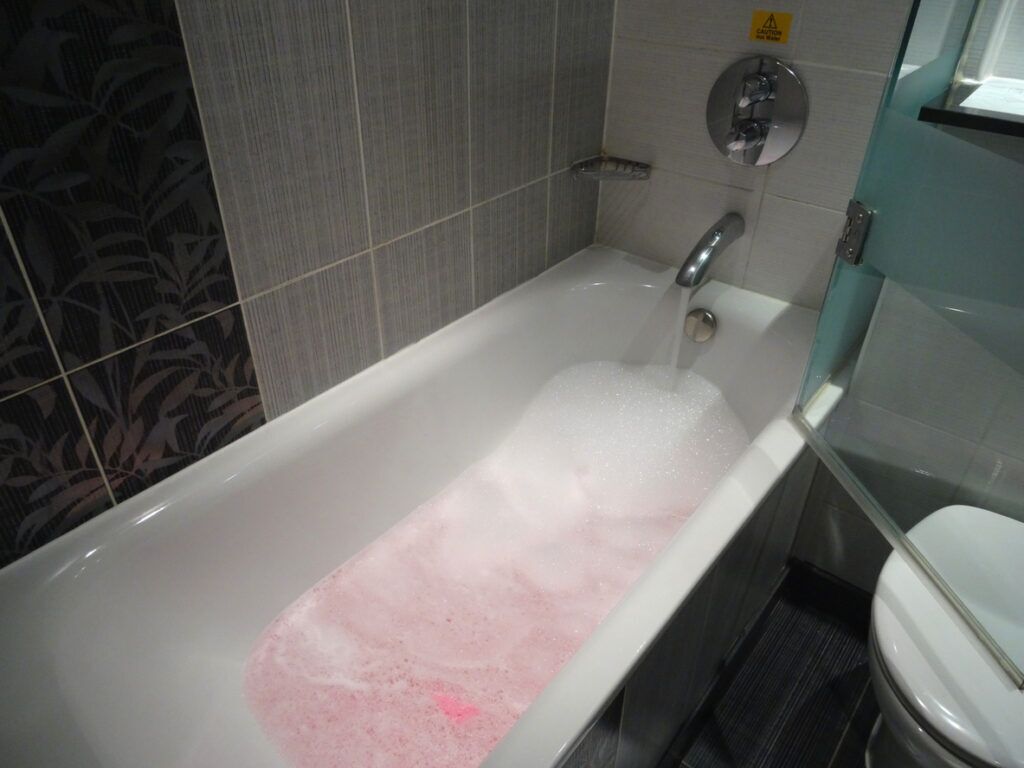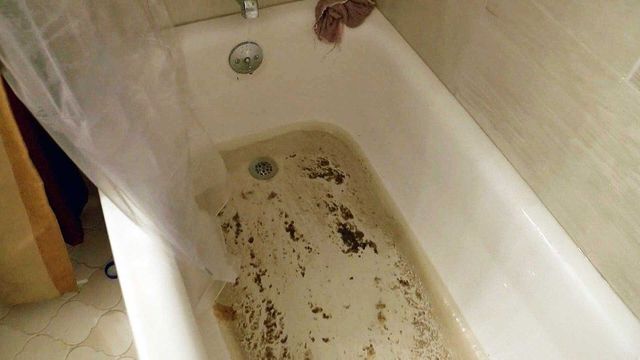Unpacking the Mystery of Sewage in the Bathtub
Unpacking the Mystery of Sewage in the Bathtub
Blog Article
Are you looking for help and advice around Why is Sewage Backing Up Into My Bathtub??

Sewage backup in the bathtub can be a stressful and unsanitary problem for any type of home owner. Not only is it troublesome, but it likewise presents serious wellness threats and shows underlying problems with the plumbing system. Understanding why sewer is showing up with the bath tub is crucial for taking appropriate action to deal with the trouble properly.
Introduction to the Problem
Comprehending the Issue
When sewage starts backing up right into the bathtub, it's a clear indicator of a problem with the drainage system. The wastewater that should be moving far from your home is rather locating its way back right into your space, which can lead to significant damage and health hazards.
Prospective Reasons
Numerous variables can contribute to sewage backup in the tub. From obstructions in the sewage system line to issues with the plumbing framework, determining the origin is vital for locating a solution.
Common Reasons for Sewage Back-up
Clogs in the Sewer Line
Among the most typical reasons for sewer back-up is a clog in the sewer line. This can occur because of the build-up of debris, grease, or international things in the pipes, protecting against appropriate circulation and creating sewer to back up into your bath tub.
Tree Origin Intrusion
Tree roots looking for moisture and nutrients can penetrate sewer lines through small cracks or joints. With time, these origins can grow and increase, creating significant damage to the pipelines and leading to sewage backup issues.
Aging Infrastructure
Older homes may have obsoleted plumbing systems that are more at risk to corrosion, splits, and damage. As pipes age, they end up being extra vulnerable to leaks and blockages, boosting the probability of sewer backup events.
Heavy Rainfall or Flooding
Throughout periods of heavy rainfall or flooding, the sewer system might come to be overloaded with excess water, triggering backups and overflows. This can lead to sewage backing up into bath tubs and various other components inside the home.
Health And Wellness Risks Connected With Sewer Back-up
Contamination of Water System
Sewage backup can infect the water in your house, presenting a major health threat to you and your household. Direct exposure to infected water can bring about stomach problems, skin infections, and other illnesses.
Spread of Condition
Sewer consists of unsafe bacteria, infections, and bloodsuckers that can cause a range of conditions, including hepatitis, cholera, and gastroenteritis. Entering contact with sewage or infected surface areas puts you at risk of infection.
Mold and mildew Growth
Dampness from sewage back-up can develop ideal problems for mold and mildew development in your home. Mold and mildew spores can aggravate respiratory problems and trigger allergic reactions in sensitive people, making prompt cleanup necessary.
Signs of Sewer Back-up
Foul Odors
Undesirable smells rising from drains or components, particularly in the bathroom, might show sewer back-up problems. These odors are usually solid and relentless, signaling an issue that calls for immediate interest.
Slow Draining Fixtures
Bathtubs, sinks, and commodes that drain pipes gradually or otherwise whatsoever could be experiencing sewer backup. If numerous components are affected at the same time, it's most likely that the concern originates from an usual factor, such as the major sewer line.
Gurgling Noises
Unusual gurgling or bubbling noises originating from drains when water is running in other places in your home are a sign of air entraped in the plumbing system. This air accumulation can result from sewer back-up and should be checked out quickly.
Immediate Actions to Take
Turning Off Water Supply
In case of sewer backup, it's important to turn off the water system to stop further contamination and damages. Situate the major water shutoff valve in your home and closed it off till the concern can be settled.
Contacting a Professional Plumber
Dealing with sewer backup is not a do it yourself task. Contact a qualified plumber with experience in handling sewage-related issues to assess the circumstance and do required repair services or clean-ups.
Preventing Contact with Contaminated Water
Up until the sewage back-up is fixed, avoid contact with polluted water to prevent the spread of bacteria and microorganisms. Put on protective equipment if you must be in the damaged location and clean your hands thoroughly later.
Safety nets
Normal Upkeep of Drain Lines
Set up normal examinations and upkeep of your sewage system lines to identify and resolve possible problems prior to they escalate into major issues. This can consist of cleaning out particles, checking for tree root breach, and fixing any kind of damaged pipes.
Mounting Bayou Shutoffs
Consider setting up bayou valves in your plumbing system to prevent sewer from flowing back into your home during periods of heavy rainfall or flooding. These shutoffs automatically close when water starts backing up, protecting your home from contamination.
Proper Disposal of House Waste
Prevent flushing anything other than toilet tissue and human waste down the bathroom to stop blockages and clogs in the sewer line. Dispose of grease, oil, and various other household chemicals correctly to minimize the threat of plumbing problems.
Tidying up After Sewer Backup
Sanitation Procedures
Completely sanitize and sanitize influenced locations after sewer backup to remove dangerous bacteria and protect against mold growth. Use ideal cleansing products and protective gear to ensure risk-free and effective cleanup.
Repair of Affected Areas
Fix any type of damage to flooring, wall surfaces, or fixtures triggered by sewer back-up. Depending upon the level of the damages, you might need to replace carpets, drywall, or various other materials to recover your home to its pre-loss problem.
Why is Sewage Coming Up Through Your Bathtub?
Reasons You May Have Sewage in Your Bathtub
All the drains in your home lead down different pipes to get to the main sewer line. If you’re seeing sewage in the bathtub, the problem is that the main sewer line is clogged up, which is causing the water running through other drains to be pushed back into other pipes. The problem isn’t the bathtub, but the main line. The sewer line can get backed up by anything that goes down the drain, from food waste, hair and soap particles to jewelry or children’s toys. Tree branches or dirt can also impact the sewer line. If you’re seeing sewage in the bathtub, you have a big problem that usually needs a professional plumber. Trying to fix this problem without the right tools or knowledge can lead to bigger plumbing problems.
Fixing a Clogged Sewage Line
Although you shouldn’t try to fix the clogged sewer line on your own, you may be able to mitigate the issue until you can get a plumber to your home. A plunger isn’t going to help, because it won’t be able to reach the sewage drain to unblock the problem.
Turn Off Water
Find the main shutoff valve to your home to turn off the water. This prevents more water from going down the drain which is only going to flow back into your bathtub.
Snake the Toilet and Drain
Start by using a drain pipe snake to clean out the toilet drain. Rotate the snake clockwise when you push the snake down. As you pull it out, the snake should spin counterclockwise. Follow up by snaking out the bathtub drain. If you are successful, both the toilet and shower will drain efficiently. If you’re not successful, you probably have a bigger problem than your tools and experience can manage.
Contact a Professional Plumber
Pros have the tools to find the source of the problem and the experience to manage big blockages without causing more damage to your pipes. It can save you a lot of stress by contacting the professionals sooner rather than later.
Identify the Early Signs of a Clogged Sewage Line
If you’re gearing up for a holiday family gathering or just want to avoid the hassle of a clogged sewage line in your home, make sure you recognize the signs of a clogged sewer line.
Slow drains are a sign of a sewer line problem. Gurgling drains from any drain in your home indicate that you may have an obstruction in the drains. If your toilet keeps getting clogged, it might be a problem with the sewer line. When you see laundry water or water from the dishwasher in different sinks in the home, it’s an indication that your sewer drain is beginning to get backed up. These symptoms can often be “fixed” temporarily to get through a day or week before you start seeing the same problem. When it comes to plumbing problems, you want to fix the root of the problem instead of muddling through. The clog will not go away on its own.
https://handymanconnection.com/mississauga/articles/why-is-sewage-coming-up-through-your-bathtub/

I was brought to that write-up about Why is There Sewage Coming Up Through the Bathtub through a good friend on our other site. Liked our blog posting? Please share it. Let another person find it. I cherish your readership.
Detail
Report this page